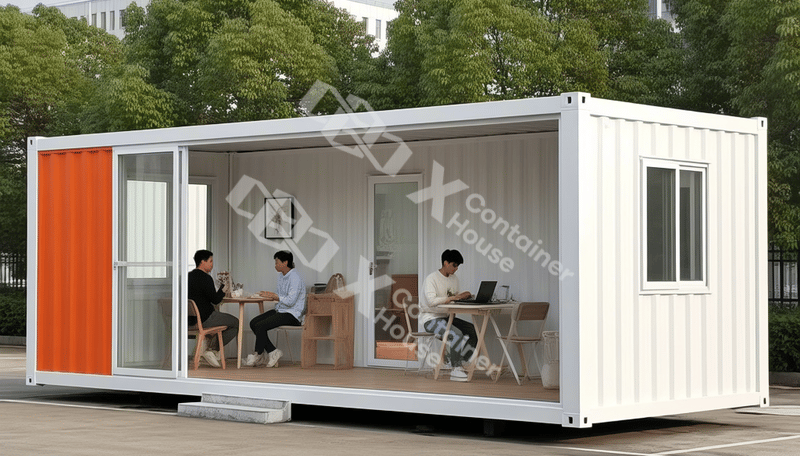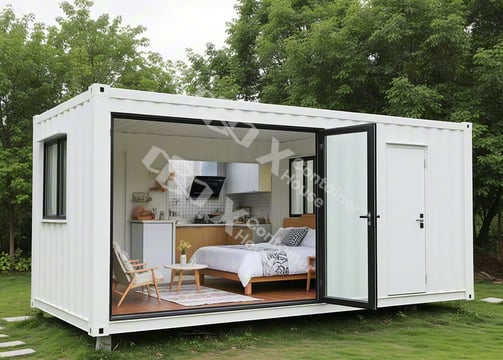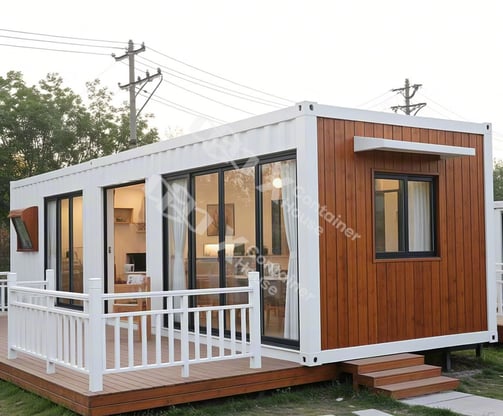Tiny Container Homes: Living Large in Small Spaces
Explore the world of tiny container homes. Learn how these creative dwellings maximize space, promote sustainability, and offer an affordable way to live large in small areas. Discover design ideas and community aspects.
CREATIVE CONTAINER HOUSE
4/8/20253 min read


In an era where space is at a premium and sustainability is a top priority, tiny container homes, also known as creative container homes or creative container dwellings, are emerging as a revolutionary solution for modern living. These homes, crafted from repurposed shipping containers, offer a unique blend of affordability, durability, and design flexibility, allowing residents to live large in surprisingly small spaces.
The Rise of Tiny Container Homes
The popularity of tiny container homes has soared in recent years, driven by a growing interest in minimalist living and the desire to reduce one's carbon footprint. Shipping containers, with their standardized size and robust construction, provide an ideal foundation for creating compact, yet functional living spaces.
These homes are not only a cost - effective alternative to traditional housing but also offer a level of customization that is hard to match. Homeowners can choose from a variety of container sizes and configurations, and then work with designers and builders to transform the raw space into a personalized living environment. Whether it's a cozy studio apartment, a family - friendly two - bedroom home, or a multi - level dwelling, the possibilities are endless.
Maximizing Space: Smart Design Solutions
One of the biggest challenges of living in a tiny container home is maximizing the limited space. However, with clever design solutions, it's possible to create a home that feels spacious and comfortable.
Multi - functional furniture is a key element in tiny container homes. For example, a sofa can double as a guest bed, and a coffee table can have hidden storage compartments. Vertical space is also utilized to its fullest, with wall - mounted shelves, hanging organizers, and loft beds providing additional storage and living area.
In the kitchen, compact appliances and clever layout designs help to make the most of the small space. A galley kitchen with a pull - out pantry and a fold - down dining table can provide all the necessary functionality without taking up too much room. The bathroom is often equipped with space - saving fixtures such as a corner shower, a wall - mounted toilet, and a vanity with built - in storage.


Sustainability and Affordability
Tiny container homes are a prime example of sustainable living. By repurposing shipping containers, which would otherwise end up in landfills, these homes reduce waste and the demand for new building materials. Additionally, the energy - efficient design of many tiny container homes, with features such as solar panels, rainwater harvesting systems, and high - performance insulation, helps to lower the carbon footprint of the residents.
In terms of affordability, tiny container homes are often more cost - effective than traditional homes. The lower construction costs, combined with the reduced need for land, make them an attractive option for first - time homebuyers, young professionals, and those looking to downsize.
Moreover, the portability of container homes allows residents to move their homes easily if needed. This flexibility is especially valuable for those who like to travel or work in different locations.
The Community Aspect
While tiny container dwellings offer a high degree of independence, they also foster a sense of community. Many tiny container home developments are designed as small, close - knit communities where residents can interact and support each other.
Shared spaces such as community gardens, outdoor lounges, and recreational areas provide opportunities for socializing and building relationships. In these communities, residents can share resources, such as tools and gardening equipment, and organize events and activities together. This sense of community can enhance the overall living experience and provide a support network for those living in small spaces.
Overcoming Challenges
Despite their many advantages, tiny container homes also come with some challenges. One of the main concerns is the limited space, which can make it difficult to accommodate large families or those with a lot of possessions. However, with proper planning and a minimalist mindset, these challenges can be overcome.
Another challenge is the zoning and building regulations in some areas. In some places, there may be restrictions on the use of shipping containers as housing, or specific requirements for safety and livability. It's important for homeowners to research the local regulations and work with professionals who are familiar with the building codes to ensure that their tiny container home meets all the necessary standards.


In conclusion, tiny container houses offer a unique and innovative way to live large in small spaces. With their affordability, sustainability, and design flexibility, they are a viable option for those looking to simplify their lives and reduce their environmental impact. While there are some challenges to consider, the benefits of living in a tiny container home far outweigh the drawbacks. Whether you're a minimalist at heart or simply looking for a more affordable and sustainable housing solution, a tiny container home could be the perfect choice for you.
About
OUR POLICY
Contact
Tel:+86 536 628 1777
Fax:+86 536 628 1777
E_mail:
info@xcontainerhouse.com
XContainerHouse







© 2025. All rights reserved.
